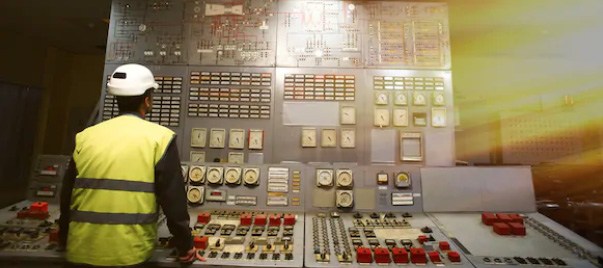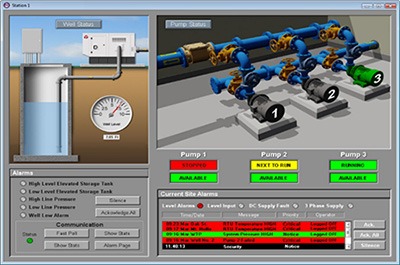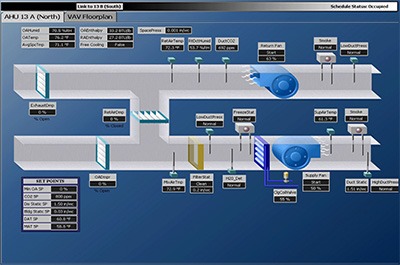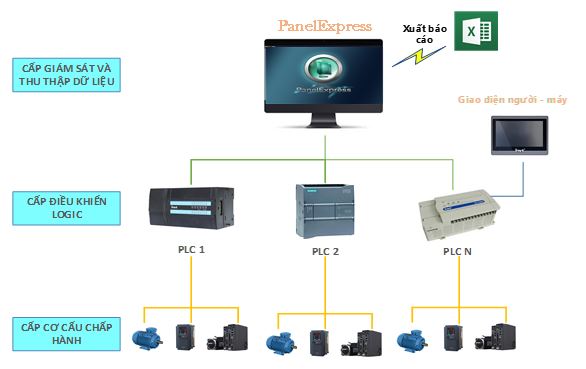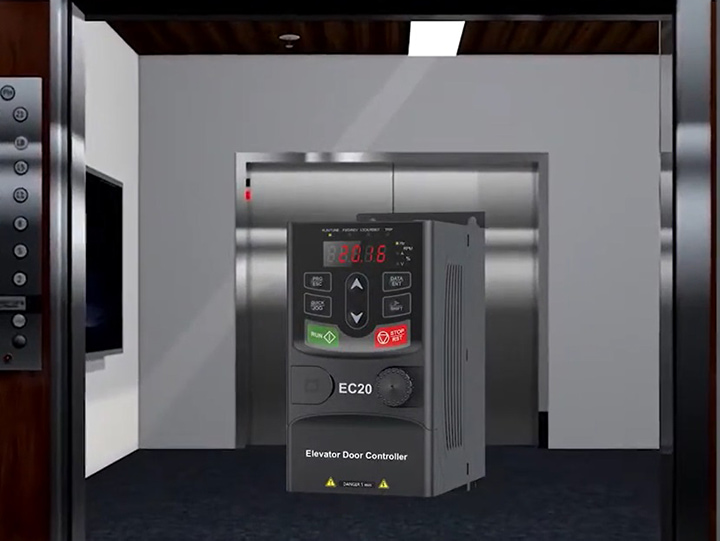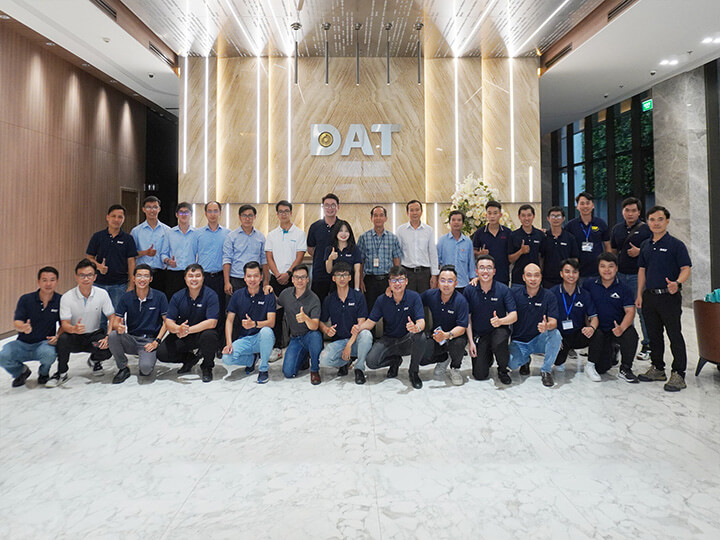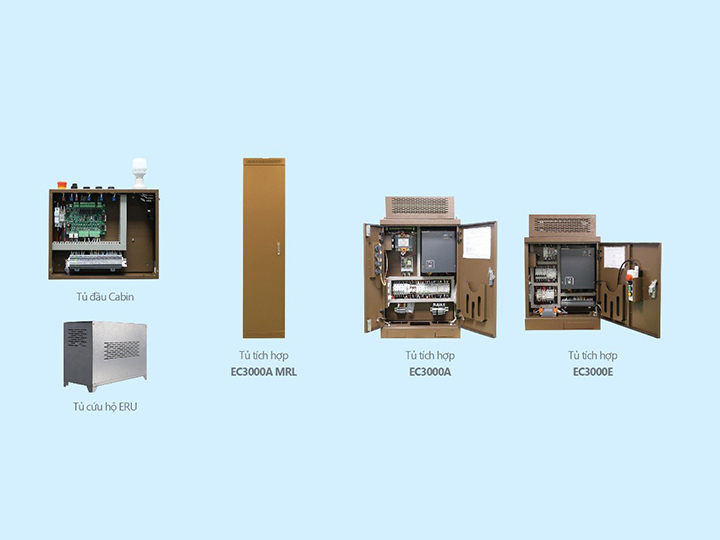The trend of implementing SCADA in industrial manufacturing in Vietnam today
The industrial manufacturing activities are becoming increasingly modernized with higher automation standards, demanding businesses to invest more in control and monitoring systems to enhance efficiency and mitigate risks. Therefore, SCADA, playing the role of the “central brain” for data collection, management, interaction, and control of machinery operations, is emerging as a superior control system and a prevailing trend in the majority of modern industrial production systems today.
What is SCADA System?
SCADA (Supervisory Control And Data Acquisition) is understood as an automated process management system in the industry with functions of supervisory control and data collection. The primary purpose of the SCADA system is to connect to industrial control systems to collect, monitor, control, and store processed data. To achieve this, the SCADA system must have the capability to connect to multiple devices, standardize systems if possible, in order to provide an overall view of the system and intervene deeply when necessary.
SCADA is widely applied in various fields, including:
- Manufacturing management systems: electricity production, steel, textiles, pharmaceuticals, chemicals, etc.
- Remote monitoring systems: pump stations, wastewater treatment, etc.
- Building monitoring systems: temperature-humidity, air conditioning, lighting, power consumption, etc.
Pump station
Air conditioning
SCADA is a top-priority system for large industrial plants due to its ability to maintain efficiency, process data, provide intelligent timely decisions, and forecast potential issues to minimize downtime. Consequently, the investment in constructing SCADA systems is becoming a trend that many industrial plants in Vietnam are focusing on.
How does a SCADA system structure and operate?
Every SCADA system consists of three main components:
Execution structure
- Includes measuring devices such as sensors, measuring signal conversion devices, measuring signal transmission devices, and execution devices such as motors, variable frequency drives, valves, and valve control devices.
- Role: Measurement devices are responsible for measuring various parameters and directly controlling the processes.
Control level
- Remote Terminal Unit (RTU) and Programmable Logic Controller (PLC) + Human-Machine Interface (HMI) devices.
- Role: Receives signals from measuring devices and commands from the control center to directly control the execution structure.
Monitoring and Data collection level
- Includes server systems and Human-Machine Interface (HMI) screens.
- Role: Monitors system operations, directly sends control commands to the control level, and collects data from the system.
The basic structure of SCADA starts with a PLC or RTU (Remote Terminal Unit) logic control device. PLC and RTU communicate with a variety of objects such as machinery in the factory, HMI, sensors, and terminal devices, then route information from these objects to a computer using SCADA software. The SCADA software processes, distributes, and displays data, enabling operators and analysts to make important operational decisions. For example, SCADA will immediately notify the operator when a batch shows a high error rate exceeding the threshold, and the operator will pause the machine and review the data to determine the cause of the problem. SCADA helps predict or instantly notify emerging issues, facilitating quick resolution and preventing ongoing damages.
SCADA System Brings Significant Benefits to Businesses
SCADA system is applied in various modern industries such as energy, food, oil and gas, transportation, water and waste treatment, etc., with many prominent advantages:
Improvement in operational processes: through data collection, storage, and analysis, managers have the basis to improve processes more efficiently with lower costs.
Increase in productivity: by analyzing production processes, managers can use this information to enhance production efficiency.
Improving product quality: also through the analysis of activities, timely handling of situations, managers can find ways to limit, prevent errors, and reduce the quantity of defective products during the production process.
Improvement in product quality: through activity analysis and timely situational handling, managers can find ways to limit and prevent errors in the production process.
Enhancement of safety: SCADA system replaces human supervision, controlling machinery in hazardous areas, and limiting incidents during operation.
Preservation of investment capital: business owners always weigh the cost-benefit equation when considering investing in upgrading systems to ensure long-term, efficient operation. A SCADA system with an open design allows investors to adjust, modify according to production scale, thereby eliminating temporary solutions, making it possible to continue investing in upgrades at a much lower cost.
INVT Scada Software – Superior SCADA control and monitoring solution from DAT
With nearly 17 years of leading experience in researching a series of highly effective specialized automation solutions, DAT, in collaboration with INVT technology experts, has successfully developed and introduced the modern INVT Scada PanelExpress software. It allows control, monitoring, accurate data collection, is user-friendly, and brings long-term efficiency to businesses.
DAT’s solution uses VT Designer software to design SCADA control interface and operates on a PC through PanelExpress software.
PanelExpress
For control and monitoring features:
– Use VT Designer software to create a monitoring interface through properties such as buttons, text, switches, and time, making it convenient and quick to design the interface.
– Support drawing various graphs such as data, trend, chart to provide management supervision and accurately evaluate factory operations to make timely adjustments.
– Allow embedding supporting languages such as VBScript, JavaScript, NativeScript to extend and enhance the control features of the SCADA software.
– Support Alarm to warn of dangers when the system encounters malfunctions. Set Password to authorize users, including supervisors and those permitted to access the system.
For data collection features:
– Support export and import of Excel files: Create data sources for reporting, management, and evaluation of factory quality.
– Link to databases such as Access, MySQL, SQL, Oracle: A common data management tool, meeting efficient and rapid data storage, search functions, ensuring the security of factory information.
DAT’s SCADA solution brings many great benefits, such as:
- Stable operation, intuitive and vivid interface.
- Quick programming and design time.
- Software integrates many new features to meet all customer requirements.
- Improvement in product quality: Through analyzing system activities, management can find ways to limit, prevent errors in the production process.
- Reduced operating and maintenance costs: The SCADA system allows monitoring of devices placed in remote locations, reducing inspection costs and monitoring fees.
- Preservation of investment capital: The SCADA system is designed to be open, allowing investors to adjust, modify according to the production scale.
DAT is the exclusive representative of INVT group in Vietnam with two INVT warranty service centers located at the headquarters in Ho Chi Minh City and DAT Hanoi branch, ready to handle any situation and provide 24/7 technical support to ensure the stable, smooth operation of customers, achieving the best efficiency.
Call the Hotline 1800 6567 (free call charge) now to get the most effective solution for your business from DAT’s experts.


